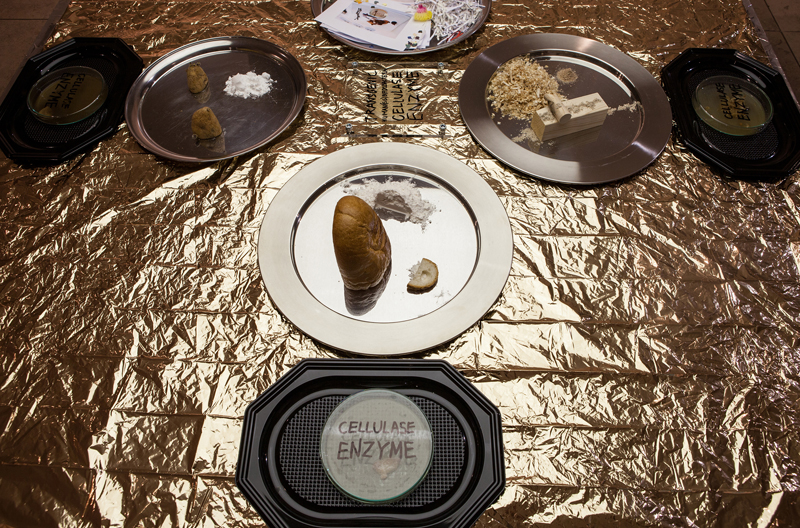
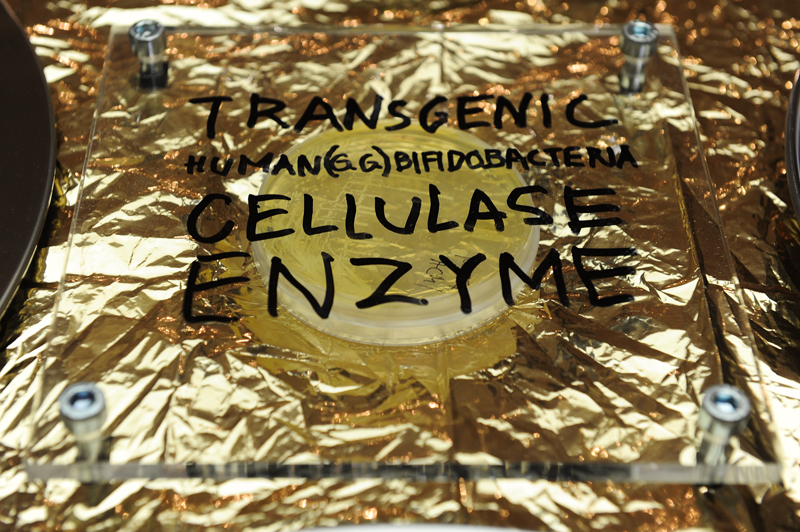

an enzyme that can break down cellulose.
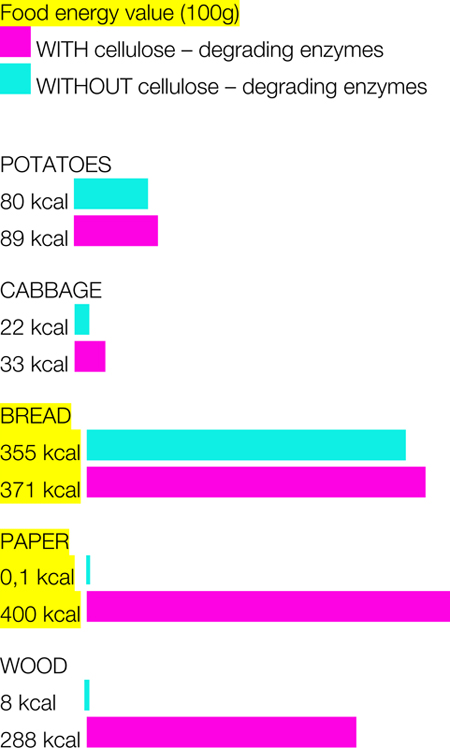
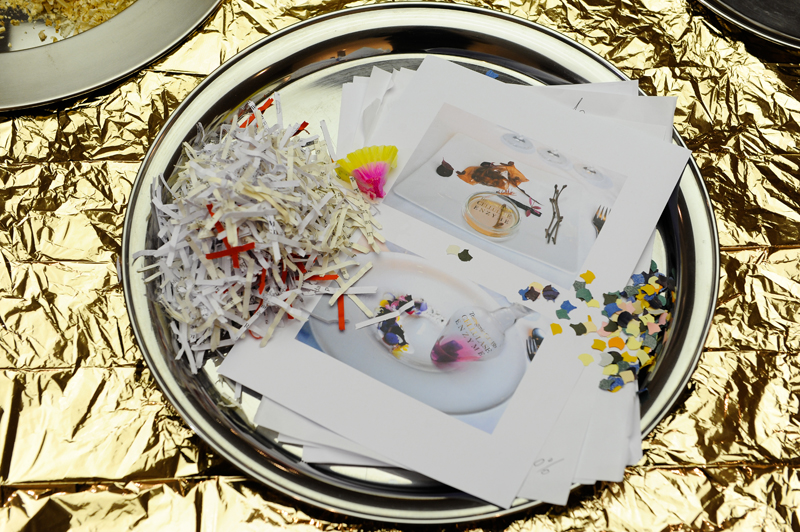
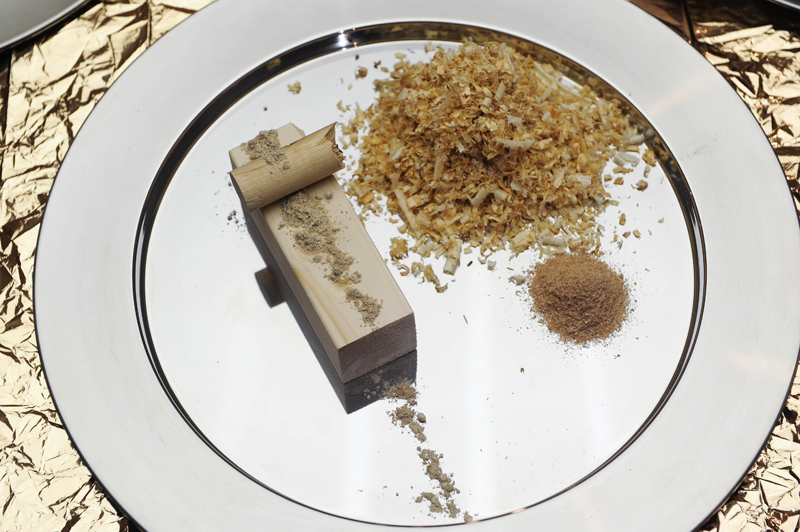
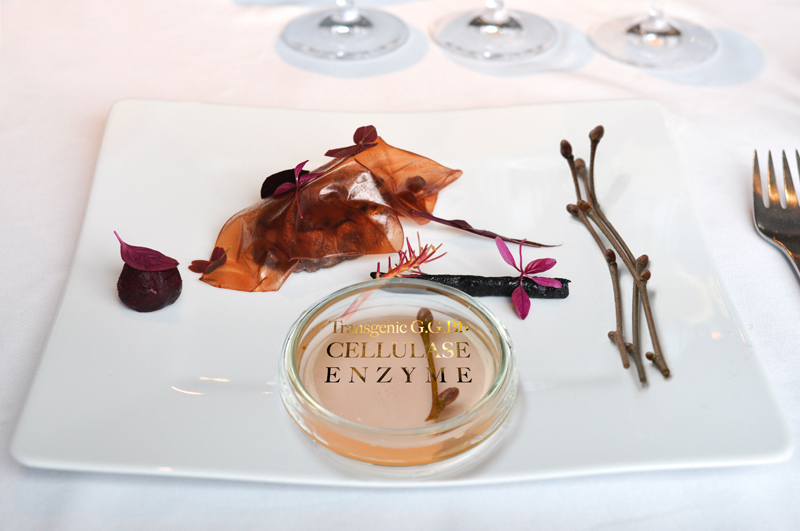
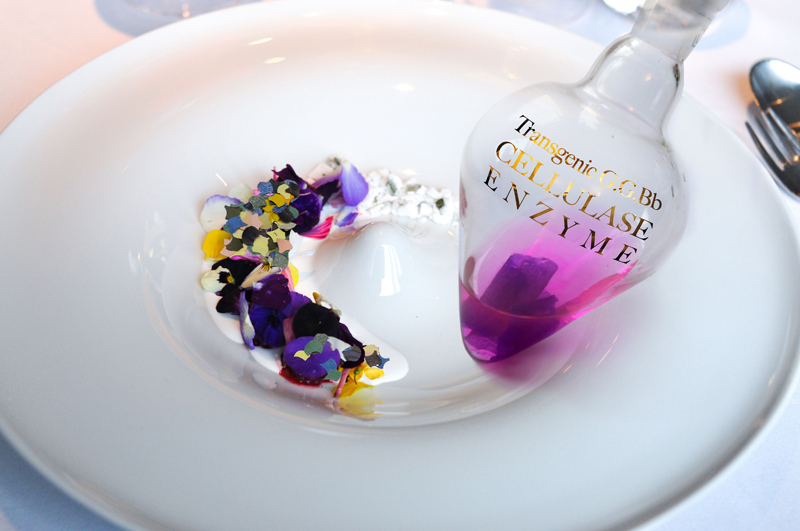
| UN estimates that by 2050 the number of world's population will reach 9 billion, therefore it will be necessary to produce by 70 per cent more food. Thus instead of producing greater amounts of food the project offers other solutions and studies the interaction of these new ideas with culture, environment and human. The project Foood is based on the human's (G. G.) genetic modification of metabolic bifidobacteria outside the body giving them the ability to synthesise an enzyme that can break down cellulose. Cellulose forms the cell walls of all plants. For the human metabolism, the indigestible cellulose cell wall reduces the nutritional energy value of food. Cellulose is glucose polymer of ordinary sugar. These cellulolytic enzymes would allow humans to make a third more efficient use of food from the plant world – potatoes, carrots, cabbage etc. that contain a significant amount of material that is indigestible by humans . They would also allow the more efficient use of completely new types of food resources even, for example, cellulose containing wood and paper. |